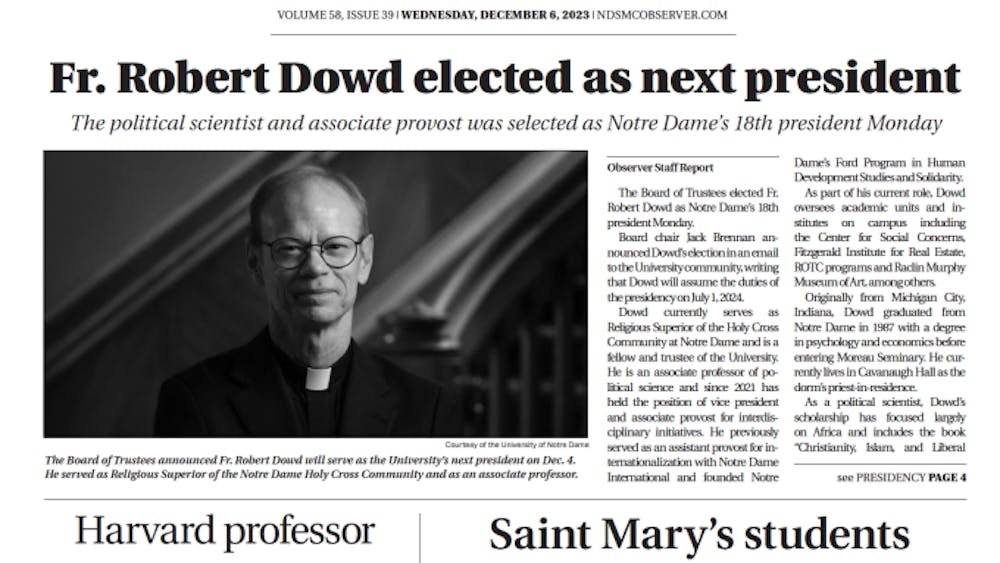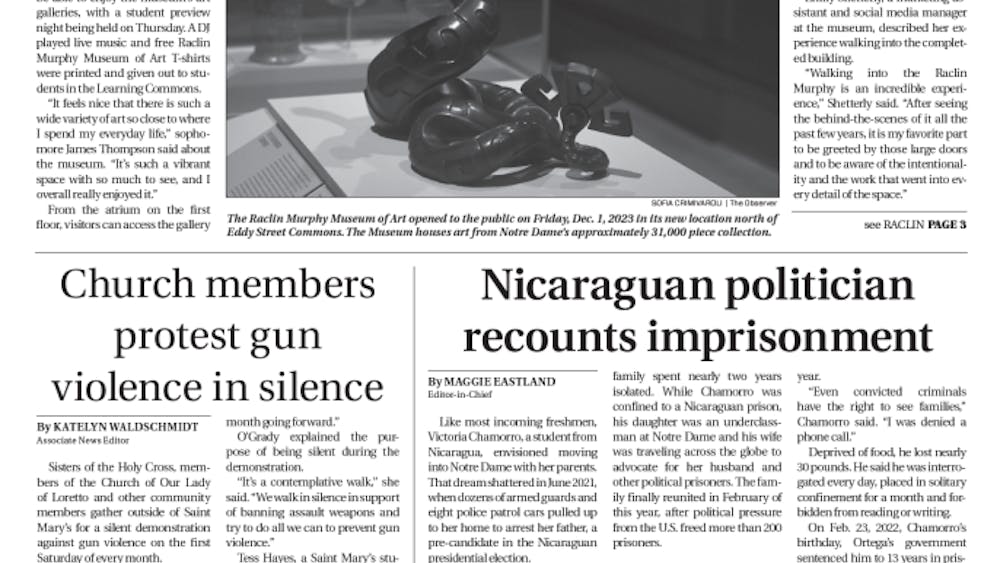Editor's note: Because the late-term abortion procedure is a current political issue and some descriptions of it may contain graphic content and offensive language, the letters discussing this issue may contain such language as well. In order to foster an intelligent dialogue on this matter, this language must be included. Readers who might be offended by such language are cautioned.
The new federal law banning "partial-birth abortion" will not stop a single abortion and it will probably be struck down by the courts. So why did they enact it?Most abortions after 12 or 13 weeks are done by dilation and evacuation. The cervix, or entrance to the womb, is dilated, the fetal sac is punctured and drained and the unborn child's head is crushed. The body is then dismembered and removed with suction and forceps. Abortionist Martin Haskell developed an alternative, dilation and extraction, because "most surgeons find dismemberment at 20 weeks and beyond to be difficult due to the toughness of fetal tissues" and because dilation and evacuation can involve a risk of perforating the uterus. Dilation extraction is called "partial-birth abortion."In partial birth abortion, which is done after 20 weeks, the cervix is dilated to allow removal of the child's body except for the head. The abortionist uses forceps to deliver the baby feet first up to the head which is too large for the opening. He inserts scissors into the back of the baby's skull and opens the scissors to enlarge the hole. He inserts a suction tube and sucks out the brains. The empty skull then collapses enough to fit through the opening. The new law contains Congressional "factual findings" that "during [partial birth abortion] the child will fully experience the pain associated with piercing his or her skull and sucking out his or her brain." The Alan Guttmacher Institute reported this year that 2,200 partial birth abortions were performed in the United States in 2000. In 1996, 650 were performed.In Stenberg v. Carhart, decided in 2000, the Supreme Court struck down the Nebraska ban on partial birth abortion because it failed to allow partial birth abortion to preserve the "health" of the mother. "Health" includes mental and emotional health and it amounts to abortion on request. In the new law Congress declared that partial birth abortion "is never medically necessary to preserve the health of a woman." The Supreme Court is unlikely to defer to Congressional findings on any law restricting abortion.The new law allows a partial birth abortion if it is necessary to save the mother's life when it is endangered by a "physical condition." This exception can be evaded; it could include a physical condition arising from the mother's asserted disposition to commit suicide. The Congressional findings call partial birth abortion a "gruesome and inhumane procedure that is never medically necessary and should be prohibited." If so, how can it be allowed even to preserve the life of the killer?As Ron Fitzsimmons, of the National Coalition of Abortion Providers, said in 1997, "the real world impact" of a partial birth abortion ban "is virtually nil." He said doctors would use an alternative method such as dilation and evacuation, "making sure the fetus is dead before extracting it." Or the abortionist could do a hysterotomy, the abortion version of a cesarean section.If the partial birth abortion ban will not stop any abortions, why did Congress enact it? Republicans who are soft on abortion voted for the law to obtain "pro-life" certification from the Beltway pro-life establishment. President Bush signed it, confirming his "pro-life" credentials for the 2004 election. "The Republicans got a free vote," said Judie Brown of the American Life League. "It was the least they could get away with in order to receive the pro-life vote."The partial birth abortion ban, however, is a pro-life tactical victory because the campaign for it raised awareness of abortion. "With [partial birth abortion], you cannot miss the baby," said Senator Rick Santorum (R-PA). Pro-aborts fear that if people focus on partial birth abortion they might realize that the "choice" in every abortion is in the moral but not the legal sense - to murder. Unfortunately, the emphasis on the closeness of partial birth abortion to infanticide might cause people to forget that the use of a morning-after pill is no less a murder than is the debraining of a birthing infant by partial birth abortion.The enactment of the partial birth abortion ban is less a triumph than a sign of futility for the establishment pro-life movement. In a civilized society, the issue must be whether innocent human beings may be intentionally and legally killed. Over the past three decades, pro-life leaders, including the bureaucracy of the Catholic bishops, have sought to limit, but not wholly prohibit, abortion, thus framing the issue as one in which innocents may be killed. The partial birth abortion effort is a further retreat, framing the issue not in terms of whether and not even in terms of which, but in terms of how innocent human beings may be legally executed. It is a confession of moral and political bankruptcy by the establishment pro-life movement.Abortion is a legal and political issue, but only incidentally. It presents a non-negotiable moral imperative, that no innocent human being of any age can rightly be classed as a non-person and subjected to death at the discretion of another. The focus on partial birth abortion ought to remind us that the ultimate remedy for legalized abortion is restoration among the American people of the conviction that the right of innocent human life is absolute because it is the gift of God.
Professor Emeritus Charles Rice is on the Law School Faculty. His column appears every other Wednesday. He can be contracted at plawecki.1@nd.edu.The views expressed in this column are those of the author and not necessarily those of The Observer.









